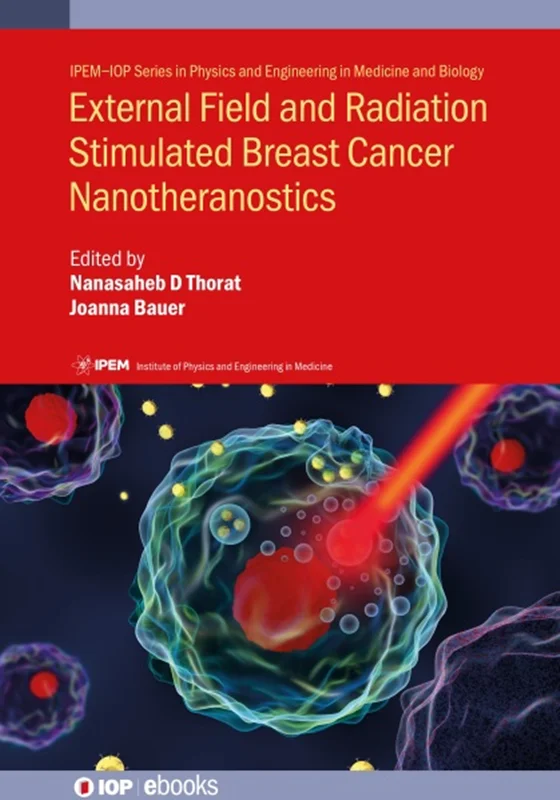Nano drug-delivery systems responding to cellular local stimuli, such as pH, temperature and reductive agent’s activation, i.e. enzymes, could effectively provide passive-mode desirable release but fail in disease treatment following the biological rhythms of brain tumor. Undoubtedly, physical stimulation of functional hybrid nanostructures can release chemotherapeutic cargos more efficiently and could offer an alternative solution as on-demand breast-cancer theranostics. Moreover, remote physical triggering of these nanostructures are more advantageous in terms of improved therapeutics efficiency, spatial and temporal controllability over the chemically stimulated release, the lack of undesirable adverse effects and minimal cargo detachment during the in vivo delivery.
This book is a compilation of research development lead by expert researchers and it establishes a single reference module. These novel multimodalities can be extremely potent in understanding cancer through real-time observation of drug delivery, release and activity for non-conventional breast-cancer therapies. In this scenario, the text directly addresses, for the first time, all translational aspects and clinical perspectives of physically stimulated breast-cancer nanotheranostics from a wide-ranging and multidisciplinary perception providing unrivalled and comprehensive knowledge in the field.Nano drug-delivery systems responding to cellular local stimuli, such as pH, temperature and reductive agent’s activation, i.e. enzymes, could effectively provide passive-mode desirable release but fail in disease treatment following the biological rhythms of brain tumor. Undoubtedly, physical stimulation of functional hybrid nanostructures can release chemotherapeutic cargos more efficiently and could offer an alternative solution as on-demand breast-cancer theranostics. Moreover, remote physical triggering of these nanostructures are more advantageous in terms of improved therapeutics efficiency, spatial and temporal controllability over the chemically stimulated release, the lack of undesirable adverse effects and minimal cargo detachment during the in vivo delivery.
This book is a compilation of research development lead by expert researchers and it establishes a single reference module. These novel multimodalities can be extremely potent in understanding cancer through real-time observation of drug delivery, release and activity for non-conventional breast-cancer therapies. In this scenario, the text directly addresses, for the first time, all translational aspects and clinical perspectives of physically stimulated breast-cancer nanotheranostics from a wide-ranging and multidisciplinary perception providing unrivalled and comprehensive knowledge in the field.Nano drug-delivery systems responding to cellular local stimuli, such as pH, temperature and reductive agent’s activation, i.e. enzymes, could effectively provide passive-mode desirable release but fail in disease treatment following the biological rhythms of brain tumor. Undoubtedly, physical stimulation of functional hybrid nanostructures can release chemotherapeutic cargos more efficiently and could offer an alternative solution as on-demand breast-cancer theranostics. Moreover, remote physical triggering of these nanostructures are more advantageous in terms of improved therapeutics efficiency, spatial and temporal controllability over the chemically stimulated release, the lack of undesirable adverse effects and minimal cargo detachment during the in vivo delivery.
This book is a compilation of research development lead by expert researchers and it establishes a single reference module. These novel multimodalities can be extremely potent in understanding cancer through real-time observation of drug delivery, release and activity for non-conventional breast-cancer therapies. In this scenario, the text directly addresses, for the first time, all translational aspects and clinical perspectives of physically stimulated breast-cancer nanotheranostics from a wide-ranging and multidisciplinary perception providing unrivalled and comprehensive knowledge in the field.

